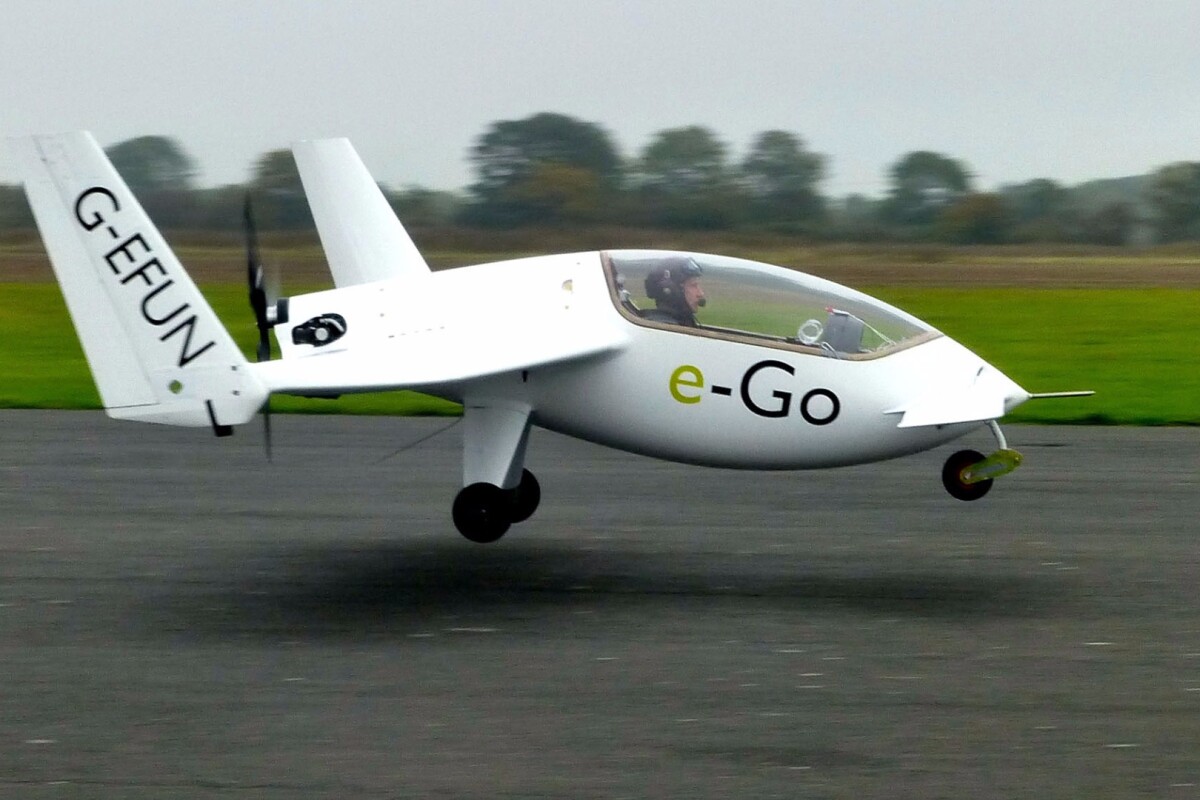When you think of aircraft, the words compact and accessible don't necessarily spring to mind. The team at e-Go aeroplanes is trying to change that with their new microlight, the first of which recently rolled off the production line into the hands of the first customer. Made of lightweight carbon fiber, the e-Go is powered by a compact Wankel rotary engine and sports a removable canard and wings so it can be parked in your garage.
Born out of a competition run by the Light Aircraft Association in 2007, e-Go is built with low-cost flying in mind. Power comes from a 30-hp (22-kW) Wankel rotary engine, which is an adaptation of a Rotron engine designed for work in UAVs. In total, the power plant, which runs on on garage forecourt fuel, weighs 23 kg (51 lb) and boasts a fuel efficiency of 65 mpg (3.6 L/100 km) at a speed of 90 knots (104 mph/167 km/h).
The aircraft's maximum take off weight is 595 lb (270 kg), which is 10 percent less than the UK's limit for single seat deregulated aircraft, with the light weight figure coming thanks to a carbon pre-preg construction. The carbon fiber wings benefit from a foam core, while the aircraft also makes use of machined aluminum and steel for parts like the canopy hinges and undercarriage axles.

Having found a well maintained 300 m (1083 ft) grass runway, you'll be able to take off and enjoy a 531 km (330 mi) cruising range at 90 knots. The microlight's service ceiling is 10,000 ft, and it'll pull four positive and two negative g if you're trying to impersonate your favourite Red Bull Air Race competitor.
Alongside the cost of fueling an aircraft, you also need to consider the cost of storing and transporting it. In an attempt to keep these costs low, e-Go's wings and canard can be demounted, allowing it to be more easily towed and reduce storage space to cut down on expensive hangar rentals.
Inside, the fixed seat is integral to the plane's structure, but the interchangeable seat cushions and moving pedals are in place to accommodate pilots up to 6.3 ft (193 cm) tall. While it will accomodate long-legged flyers, maximum pilot weight is pegged at 110 kg (243 lb), so it probably pays to go easy on the choccy if you're on the tall and generously proportioned side of things. The aircraft will also carry up to 33 lb (15 kg) of luggage.

Pilots draw on information from a large screen displaying flight instruments, engine monitoring, checklists and navigation. If using all this information while you're actually in the air sounds a bit stressful, you can hook the e-Go up to a computer and use its cabin controls as a flight simulator.
There was no simulating when 70 guests got together in Conington, England to celebrate the handover of G-OEGO, the first production e-Go. Instead, they were treated to a display of the plane's maneuverability from test pilot Keith Dennison.
Serial production of the plane has now begun, with prices starting at £50,000 (US$70,700).
Source: e-Go



















